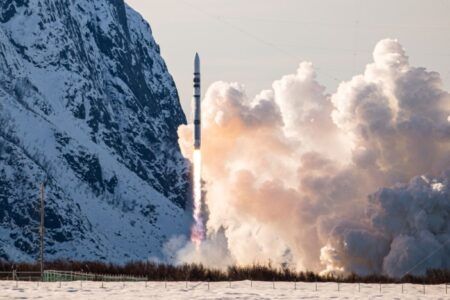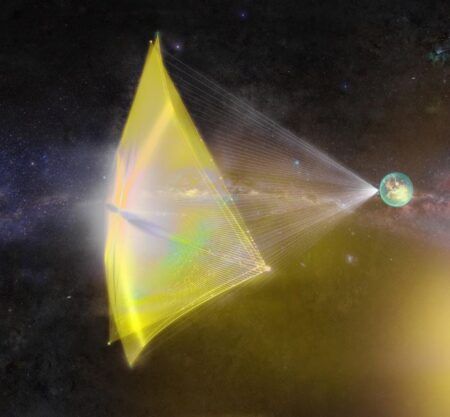Vector, a micro satellite space launch company, has announced the successful suborbital flight of its B0.002 test vehicle, a full-scale prototype of the company’s Vector-R launch vehicle.
The launch was carried out on August 3 and represents both the first customer-funded launch operation for the new space commercial launch industry, as well as the first launch out of the historic Spaceport Camden in Georgia, USA, which was originally used by NASA in the 1960s for ground-based static fire testing of large solid rocket motors.
The flight test is particularly significant for Vector, which comprises new-space and enterprise software industry veterans from SpaceX, Virgin Galactic, McDonnell Douglas, Boeing, Sea Launch and VMware, because the company is manifesting customer-sponsored experiments and payloads – a major achievement among the next generation of small launch vehicle developers.
Test packages from Astro Digital (a leader in real-time satellite imagery data), the Center for Applied Space Technology (an organization focused on space-based medicine research and applications), and NASA’s Ames Research Center highlight Vector’s mission to deliver increased access for organizations looking to launch microsatellites more affordably and at a higher frequency than ever before.
“Since our inception, Vector has been committed to making space open for business,” said Jim Cantrell, CEO and co-founder of Vector. “Our historic launch today is a testament to the hard work of the Vector team, as well as support from NASA and Spaceport Camden. Together, we’re on the fast-track to get to an orbital capability in 2018 and look forward to continuing momentum and unprecedented growth through the course of this year.”
A primary objective of the test was the demonstration and evaluation of a next-generation 3D additively manufactured engine injector developed through a collaborative research program with NASA Marshall Space Flight Center. This injector was ground tested last month and an earlier version was used in Vector’s initial B0.001 launch vehicle in May.
The August 3 launch represents another milestone for Vector, as it was the first time spark igniter technology developed with the University of Alabama in Huntsville and NASA Marshall Space Flight Center was employed to start the booster main engine.
“This is a significant accomplishment for Vector and for NASA’s initiatives to advance enabling technologies for suborbital and orbital small launch vehicles,” said Ron Young, NASA Flight Opportunities Program Manager.
“NASA’s role in helping the industry to develop commercial small satellite launch capabilities through the STMD Announcement of Collaborative Opportunities (ACO) awards, enables companies such as Vector to offer this capability to the commercial market place sooner.”
August 9, 2017




